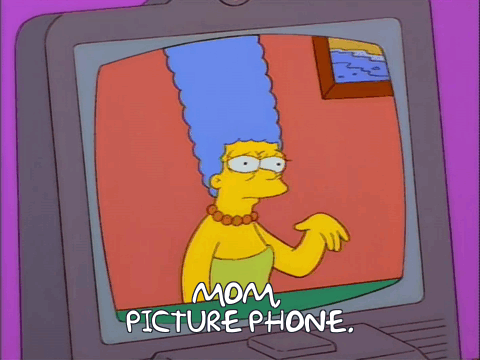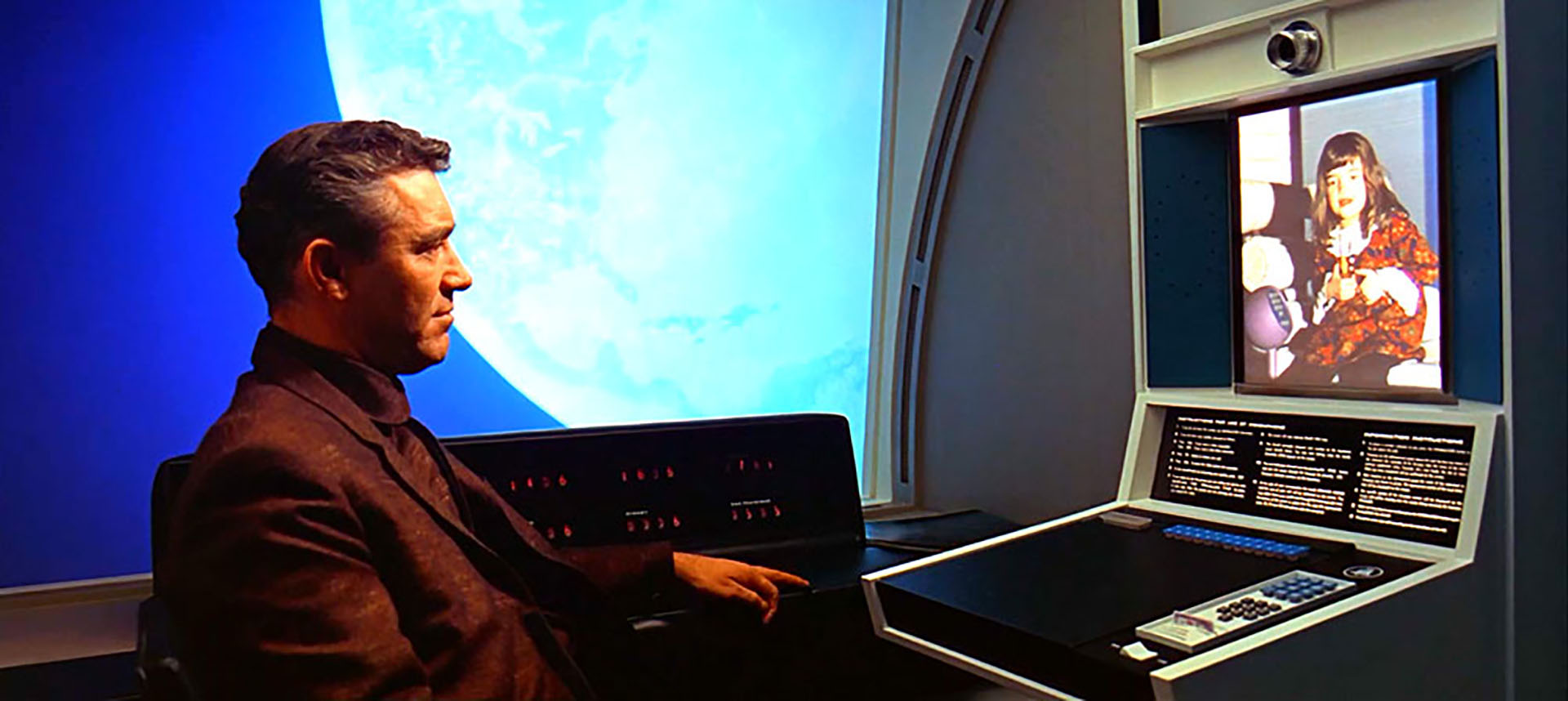Back in the far-off, ancient history of February 2020, I tweeted the following in response to a screenshot from an old movie that showed people in “the future” talking on video phones:
I find it fascinating that visions of the near future always assumed we'd all want video calls by default once the technology became feasible, then as soon as the technology became feasible we all as one went "No thanks". https://t.co/85ccvaLXft
— Seb Patrick (@sebpatrick) February 27, 2020
In those days, it was hard to imagine a time when the population would suddenly, en masse, get used to the idea of video calling as a part of the day-to-day norm. But here we are, just a couple of months later, and the future predicted by all that old sci-fi has come to pass for utterly unexpected reasons.
In response to that tweet, a friend of mine recommended a book that explored the same topic. Because Internet is a 2019 book by Canadian linguistics expert Gretchen McCulloch, and explores how the internet has changed, and continues to change, language and communication. It’s a fabulous read, breezy and engaging with at least one startlingly good insight on almost every page. And in it, McCulloch offers her thoughts on why video calling was (at that point) yet to truly take off:
With a robust norm of always answering a ringing phone and no efficient way to plan a phone call except via the same medium, the risk was too great of catching someone unclothed or with a messy house in the background. Picking up a videocall out of the blue was simply too awkward to contemplate.
McCulloch goes on, however, to suggest that the growing ubiquity of chat-style messaging was actually helping video calling along the way to becoming accepted:
Since every videochat program includes a text messaging feature, you can plan a videochat before committing to one (“hey, you ready to skype?” “just give me 2 min”) and this awkwardness vanishes: you have the option to decline via text where no one can see you, or a minute to scramble into a decent-looking shirt. Paradoxically, having access to the lesser intrusiveness of chat conversations makes it easier to have higher-bandwidth conversations in video.
All of this, of course, was written before anyone knew what the word “Coronavirus” was, and when writing it McCulloch would have had no way of knowing what the world would be like in 2020. But I would imagine that she is as fascinated as I am by what’s developed in such a short space of time as a result.
Prior to the outbreak, video chats would generally be used for a few select purposes: for teleconferencing business meetings, for FaceTiming grandparents on special occasions, for podcasters who need visual cues to avoid talking over one-another, for experts to be interviewed on the news without having to come into the studio.
In all those cases, however, it would be a substitute for face-to-face contact. You wouldn’t choose to video chat with someone you could see in person, because why would you need to? Now, however, we can’t see anyone in person – so what was the substitute has instead become our primary communication method. And as such, we’ve had to adapt and develop new expectations and conventions around how we use it.
The terror of being caught unawares on a video call still exists, of course; but with the majority of office workers now at home at their desks, we’re much more prepared for the possibility of getting a video call unprompted. While the courtesy might still exist to ask a colleague in advance if they’re “free for a chat” (particularly if you know it’s going to be a deep and involving one), there’s no real issue dialling up for a quick impromptu query when you know that chances are, the person you’re calling will be at their home workstation, and expecting to be seen on video at any time.
Plus, of course, our lives are now more structured around video chats – not just during office hours, either. As the only way to “socialise” with friends and family, the idea of the virtual pub has taken off with speed. Almost everyone seems to have at least one kind of virtual hangout a week – from family pub quizzes, to listening and watchalong parties, or simply just all your mates having their cameras on for a couple of hours. Some writers and performers have even put on live “theatre shows”, with full-cast (and properly directed!) table reads over the platform.

This has meant that even those who aren’t digitally native or tech-savvy have got to grips with the technology quicker than they might usually have expected. McCulloch’s book identifies groups of users that she categorises as Old Internet People, Full Internet People, Semi Internet People, Post Internet People and Pre Internet People, and she writes of that latter cohort:
Pre Internet People generally have one account somewhere that a more adept internet person set up for them, which may be on email, “the Facebook”, a text chat app like WhatsApp, or video chat like Skype or FaceTime. They know how to do basic things like send and receive messages there, but if they ever get logged out or if the app changes its interface, they’re going to have to ask for help again.
But all these cohorts, even the Pre Internet People, have taken to video chatting as if they’ve been online all their lives. Sure, in those first couple of weeks you might have had a lot of awkward “No, hit that button, take yourself off mute, you’re still connecting to audio, can you hear us?” moments, but they’re diminishing as time goes on. We’re even getting the hang of not talking over each other as much, as we all start to understand that the computer will mute our mic while someone else’s voice is coming out of the speakers.
https://twitter.com/sivavaid/status/1256995452223963136
Of all the video chat services, it is of course Zoom that has famously benefitted from this surge of use. Despite a wealth of competing technologies, the cross-platform simplicity and robustness of their offering has made them the go-to for almost everyone who wasn’t already locked into an existing infrastructure like Microsoft Teams.
But the effect goes far beyond simply the financial gain the company has made in recent weeks. Strikingly, “zooming” has already supplanted “skyping” as the accepted genericised term for video chatting – a seismic shift of remarkable speed even by the usually quick standards of internet linguistic change, and one that I look forward to seeing the OED pull apart in future years.
And beyond “zooming”, we’re developing other conventions and standards of etiquette, phrases, imagery and iconography. This has been helped in part by the entertainment industry’s embracing of remote recording technologies – as the stocks of traditionally-produced television ran out at an alarming rate, we’ve found ourselves getting used to shows that look like this:
"A Parks and Recreation Special" is now streaming. TREAT 👏 YO 👏 SELF 👏
We're helping raise money for @FeedingAmerica. Join us! https://t.co/YuyWBTYmrH pic.twitter.com/dRvG1gIYXr
— Parks and Recreation (@parksandrec) May 1, 2020
That visual, of a grid of faces against a black background, will surely become one of the defining cultural legacies of these times. The very idea of making an entire TV show that looked like that would have been unthinkable before March of this year – but while we obviously hope it doesn’t have to be the norm for very long, don’t be surprised to see it appear more often as a stylistic choice in the years to come.
But what about the rest of us? What happens when we can start seeing each other face-to-face again? Will weekly Zoom quizzes stop? Will we all forget how to use Microsoft Teams again? It’s never before been the case that a specific piece of communications technology has been adopted as quickly and suddenly, in as widespread a fashion, as video calling has done now – so we have no previous case studies to examine whether or not this new norm might continue once lockdown ends.
One thing’s for sure, whatever this future looks like, it probably won’t resemble anything sci-fi had the ability to predict – “picture phones” or no.



